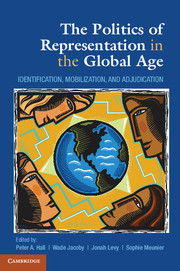Book contents
- Frontmatter
- Dedication
- Contents
- Abbreviations
- Acknowledgments
- Foreword
- 1 Introduction
- Part I The Politics of Interest Representation
- 2 Discursive Democracy and the Construction of Interests
- 3 Regulation Released
- Part II Responding to the Challenges of a Global Era
- Part III New Institutional Settings for Representation
- Short Biographies of Editors and Contributors
- Index
- References
2 - Discursive Democracy and the Construction of Interests
Lessons from Italian Pension Reform
Published online by Cambridge University Press: 05 June 2014
- Frontmatter
- Dedication
- Contents
- Abbreviations
- Acknowledgments
- Foreword
- 1 Introduction
- Part I The Politics of Interest Representation
- 2 Discursive Democracy and the Construction of Interests
- 3 Regulation Released
- Part II Responding to the Challenges of a Global Era
- Part III New Institutional Settings for Representation
- Short Biographies of Editors and Contributors
- Index
- References
Summary
This chapter provides an empirical illustration of the three processes of interest – identification, mobilization, and adjudication – analyzed in the introductory chapter. Specifically, it argues that a political process of discursive democracy – a decision-making process in which leaders and followers engage in debate prior to voting and decisions are then taken based on majority rule – plays an important role in shaping the actors’ perception of what is and is not in their interest (identification); contributes to building active support for the course of action that is eventually selected (mobilization); and arbitrates among different policy directions promoted by competing actors (adjudication).
The chapter reconstructs the trajectory of Italian pension reform between 1992 and 2007, and focuses in particular on the role the Italian trade unions played in it. Italian workers were ambivalent about pension reform: On the one hand it negatively impacted the conditions of access and the generosity of future pension benefits. On the other hand it strengthened the financial sustainability of the system and (presumably) led to systemic gains like faster economic growth and employment creation. Some workers were vehemently opposed, others were more favorable, and still others just did not know where they stood. The situation of the latter contradicts a key assumption of rational choice research: Actors are supposed to have well-defined preferences over alternative courses of action.
- Type
- Chapter
- Information
- The Politics of Representation in the Global AgeIdentification, Mobilization, and Adjudication, pp. 29 - 52Publisher: Cambridge University PressPrint publication year: 2014
References
- 1
- Cited by



